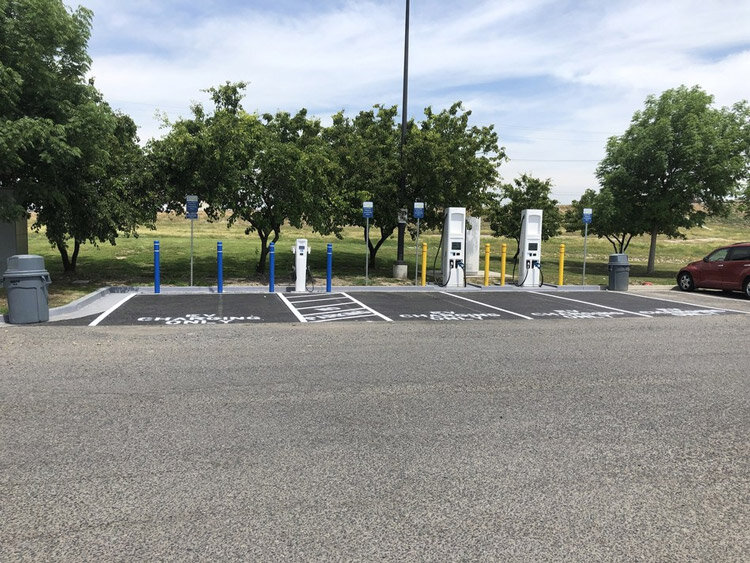Confused About Car Charging Systems? Your Guide to Get Started
With more people driving electric cars every year, and governments strongly incentivizing the public adoption of these vehicles, there is a growing public demand for more electric car charging stations.
In response, many businesses and local governments are thinking about installing charging stations for their employees, customers, or tenants. However, there are several different models and types of charging stations out there.
If you’re thinking about installing electric car charging stations, which should you choose for your lots?
There are several classes of electric vehicle chargers. The three most popular car charging systems are Level 1, Level 2, and DC fast charging.
Here’s a short electric car charging guide to help you figure it out which one is right for you and your needs.
Level 1 AC Charging
This type of charger, usually just called a “Level 1 charger,” plugs into any standard electrical outlet and is popular for residential customers who want to charge their cars at home overnight. Commercially, these chargers have largely been replaced, as they provide less than 2 kilowatts of power (not much more from a hairdryer) and therefore cannot charge a car quickly.
Level 2 AC Charging
Commonly known as “Level 2 chargers,” these units are the dominant commercial car charging systems. They require a 240-volt power hookup (similar to a washer or dryer), can fully charge a depleted car battery in a couple of hours, and can “top off” a battery (restoring a partial charge up to around 80 to 85 percent) in less than one hour, making them convenient for customers who are dropping in to shop or eat lunch.
In our electric car charging guide, we recommend Level 2 chargers as the most accessible and economical charging station.
DC Fast Chargers
The last main type of charging station is known as the DC fast charger, sometimes shortened to DCFC. These units can charge a battery from empty to full in less than an hour — even on today’s electric cars, which have bigger, more efficient batteries in order to give drivers a longer range.
DC fast chargers are the ultimate electric car chargers in terms of convenience, but they are very expensive and consume between 40 and 400 kilowatts of direct current power, requiring a more elaborate installation process and additional consumer safety measures. Additionally, many older electric cars are not compatible with them.
In our electric car charging guide, we recommend DC fast chargers if you serve a high throughput of customers.
Other Types of Chargers, and “Level 3” Confusion
Those are the main types of car charging systems, but here is some supplementary information to help you understand your options:
DC Fast Charger Connector Types
There are three types of connectors for DC fast chargers: CHAdeMO, CCS, and the proprietary Tesla connector. CHAdeMO and CCS were essentially involved in a format war, like Blu-ray vs. HD-DVD. Nissan, the main force behind CHAdeMO, recently threw in the towel in this war, which means that going forward, CCS will become the main non-Tesla DC fast charging connector format.
There are still many CHAdeMO charging facilities in the country today, and they will continue to exist for a long time, but you’ll want to choose CCS equipment to serve non-Tesla electric cars. (If you want to serve Tesla cars, you will need to buy a Tesla-compatible car charging station.)
“Level 3” Confusion
Currently, there is no “Level 3” charging standard. However, many DC fast charging technologies bill themselves as “Level 3.” This is just marketing. The actual “levels” of chargers are:
Level 1 AC Charging: Up to 1.92 kilowatts of alternating current power; takes 8 to 16 hours to fully charge a battery, but works in any standard outlet.
Level 2 AC Charging: Up to 19.2 kW of AC power; medium recharging speed, typically under 2 hours for a full charge.
Level 1 DC Charging: Up to 48 kW of direct current power; very fast; will charge in under an hour. Requires extra installation costs and safety measures. These DC car charging systems are not compatible with all electric vehicles, especially older ones.
Level 2 DC Charging: Up to 400 kW of DC power, requiring 400 amps; extremely fast! The cutting edge of EV charging technology in 2020. Not compatible with all electric cars.
When you hear “Level 1” and “Level 2,” it almost always refers to AC charging.
Any “Level 3” charging standard, were it to be introduced in the future, would likely entail an even higher amount of power.
The Importance of Networking
Whatever chargers you buy, it’s critical that you network them effectively. At EV Connect, that’s where we help ensure the stations are reliable. We offer industry-leading network charging solutions that let you monitor, manage, and monetize your electric car charging systems easily and conveniently from a single dashboard. Our customers are from a wide range of industries, including landlords, retailers, workplaces, and local governments.
To learn more, contact EV Connect to hear about our networking solutions and learn how adding this capacity to your parking lots can be a new source of ROI for your parking lots as well as a powerful amenity to attract more affluent, educated customers, employees, or tenants. We can also point you to financial incentives available to help offset the costs of installing EV charging infrastructure.

